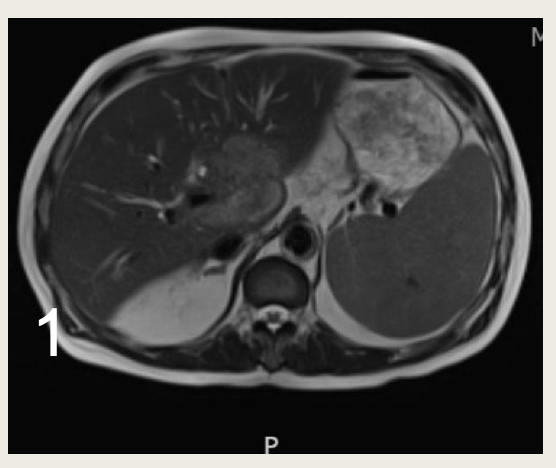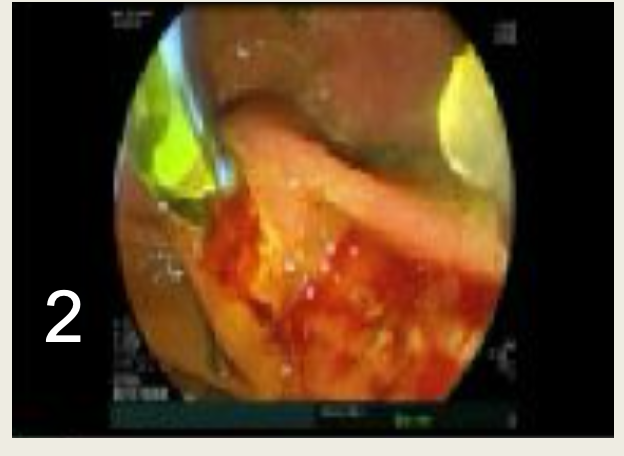Tuesday Poster Session
Category: Liver
P6026 - A Rare Case of Hepatic Post-Liver-Transplant Lymphoproliferative Disorder
Tuesday, October 28, 2025
10:30 AM - 4:00 PM PDT
Location: Exhibit Hall

Mohammad Sultan, DO
Ochsner Health Clinic Foundation
New Orleans, LA
Presenting Author(s)
Mohammad Sultan, DO, Ricardo David Espinosa, MD, Mariana Zapata, MD
Ochsner Health Clinic Foundation, New Orleans, LA
Introduction: Post-Transplant Lymphoproliferative disorder is a rare disorder that can occur in patients undergoing chronic immunosuppression for solid-organ transplants. Risk factors include duration and intensity of immunosuppression as well as Epstein Barr Virus seropositivity. The disease is characterized by poor immune surveillance of Lymphocyte T cells against infected B cells. It is estimated the incidence of post-transplant lymphoproliferative disorders in liver transplant recipients is around 2.3%. Of this 2.3% of cases, 41% involve disease of the transplanted liver. We present a case of a rare post-transplant hepatic lymphoproliferative disorder presenting with biliary obstruction.
Case Description/
Methods: A 65-year-old male status post orthotopic liver transplant in 2023 for Metabolic-Associated-Steatohepatitis (MASH) Cirrhosis presents to the hospital for painless jaundice of 5 days in duration. The patient takes mycophenolate-mofetil and cyclosporine for immunosuppression. Physical exam was notable for scleral icterus. The patient denied fever, chills or abdominal pain. Labs were remarkable for white blood cells (WBC) 2900 K/uL, platelets 94,000 K/uL, Alkaline Phosphatase (ALP) 1355 U/L, Total bilirubin 15.4 mg/dl, AST 147 U/L and ALT 237 U/L. Magnetic Resonance Cholangiography (MRCP) identified a 6.3-centimeter mass in the central liver with mass effect on the main portal vein with moderate stenosis of the common duct. The patient underwent an Endoscopic Retrograde Cholangiopancreatography (ERCP) with sphincterotomy and placement of a metal stent in the proximal common hepatic duct. A biopsy of the lesion was obtained and identified an Epstein Barr Virus (EBV) positive Diffuse B-Cell Lymphoma. The patient was then discharged with outpatient Oncology follow up to initiate R-CHOP.
Discussion: Post-transplant lymphoproliferative disorders (PTLD) are a key differential in post- transplanted patient's presenting with jaundice. This case underscores the importance of a high index of suspicion for lymphoproliferative disorders in transplanted patients, especially so when presenting with jaundice or cholestatic symptoms. Early recognition can lead to early treatment and improved outcomes. Additionally, PTLD represents the unfortunate consequence of over immunosuppression in this population as more conservative immunosuppression confers a lower risk of developing this disease. This highlights the very real challenge transplant hepatologists face daily with managing immunosuppressive regimens.

Figure: Figure 1: Liver mass encasing the common bile duct.

Figure: Figure 2: Single malignant biliary stricture of the upper third of the common bile duct.
Disclosures:
Mohammad Sultan indicated no relevant financial relationships.
Ricardo David Espinosa indicated no relevant financial relationships.
Mariana Zapata indicated no relevant financial relationships.
Mohammad Sultan, DO, Ricardo David Espinosa, MD, Mariana Zapata, MD. P6026 - A Rare Case of Hepatic Post-Liver-Transplant Lymphoproliferative Disorder, ACG 2025 Annual Scientific Meeting Abstracts. Phoenix, AZ: American College of Gastroenterology.
Ochsner Health Clinic Foundation, New Orleans, LA
Introduction: Post-Transplant Lymphoproliferative disorder is a rare disorder that can occur in patients undergoing chronic immunosuppression for solid-organ transplants. Risk factors include duration and intensity of immunosuppression as well as Epstein Barr Virus seropositivity. The disease is characterized by poor immune surveillance of Lymphocyte T cells against infected B cells. It is estimated the incidence of post-transplant lymphoproliferative disorders in liver transplant recipients is around 2.3%. Of this 2.3% of cases, 41% involve disease of the transplanted liver. We present a case of a rare post-transplant hepatic lymphoproliferative disorder presenting with biliary obstruction.
Case Description/
Methods: A 65-year-old male status post orthotopic liver transplant in 2023 for Metabolic-Associated-Steatohepatitis (MASH) Cirrhosis presents to the hospital for painless jaundice of 5 days in duration. The patient takes mycophenolate-mofetil and cyclosporine for immunosuppression. Physical exam was notable for scleral icterus. The patient denied fever, chills or abdominal pain. Labs were remarkable for white blood cells (WBC) 2900 K/uL, platelets 94,000 K/uL, Alkaline Phosphatase (ALP) 1355 U/L, Total bilirubin 15.4 mg/dl, AST 147 U/L and ALT 237 U/L. Magnetic Resonance Cholangiography (MRCP) identified a 6.3-centimeter mass in the central liver with mass effect on the main portal vein with moderate stenosis of the common duct. The patient underwent an Endoscopic Retrograde Cholangiopancreatography (ERCP) with sphincterotomy and placement of a metal stent in the proximal common hepatic duct. A biopsy of the lesion was obtained and identified an Epstein Barr Virus (EBV) positive Diffuse B-Cell Lymphoma. The patient was then discharged with outpatient Oncology follow up to initiate R-CHOP.
Discussion: Post-transplant lymphoproliferative disorders (PTLD) are a key differential in post- transplanted patient's presenting with jaundice. This case underscores the importance of a high index of suspicion for lymphoproliferative disorders in transplanted patients, especially so when presenting with jaundice or cholestatic symptoms. Early recognition can lead to early treatment and improved outcomes. Additionally, PTLD represents the unfortunate consequence of over immunosuppression in this population as more conservative immunosuppression confers a lower risk of developing this disease. This highlights the very real challenge transplant hepatologists face daily with managing immunosuppressive regimens.

Figure: Figure 1: Liver mass encasing the common bile duct.

Figure: Figure 2: Single malignant biliary stricture of the upper third of the common bile duct.
Disclosures:
Mohammad Sultan indicated no relevant financial relationships.
Ricardo David Espinosa indicated no relevant financial relationships.
Mariana Zapata indicated no relevant financial relationships.
Mohammad Sultan, DO, Ricardo David Espinosa, MD, Mariana Zapata, MD. P6026 - A Rare Case of Hepatic Post-Liver-Transplant Lymphoproliferative Disorder, ACG 2025 Annual Scientific Meeting Abstracts. Phoenix, AZ: American College of Gastroenterology.
